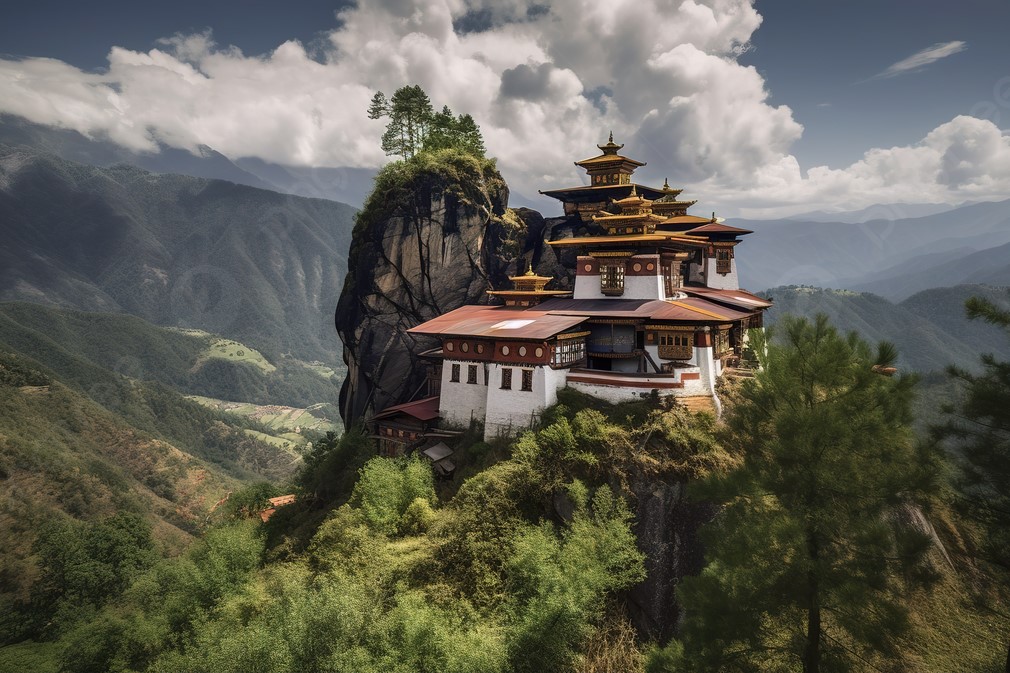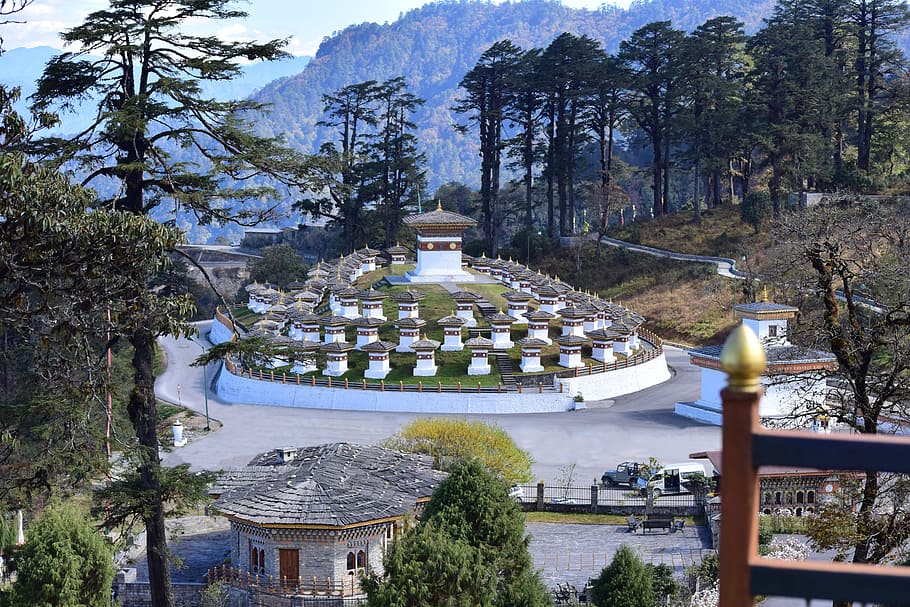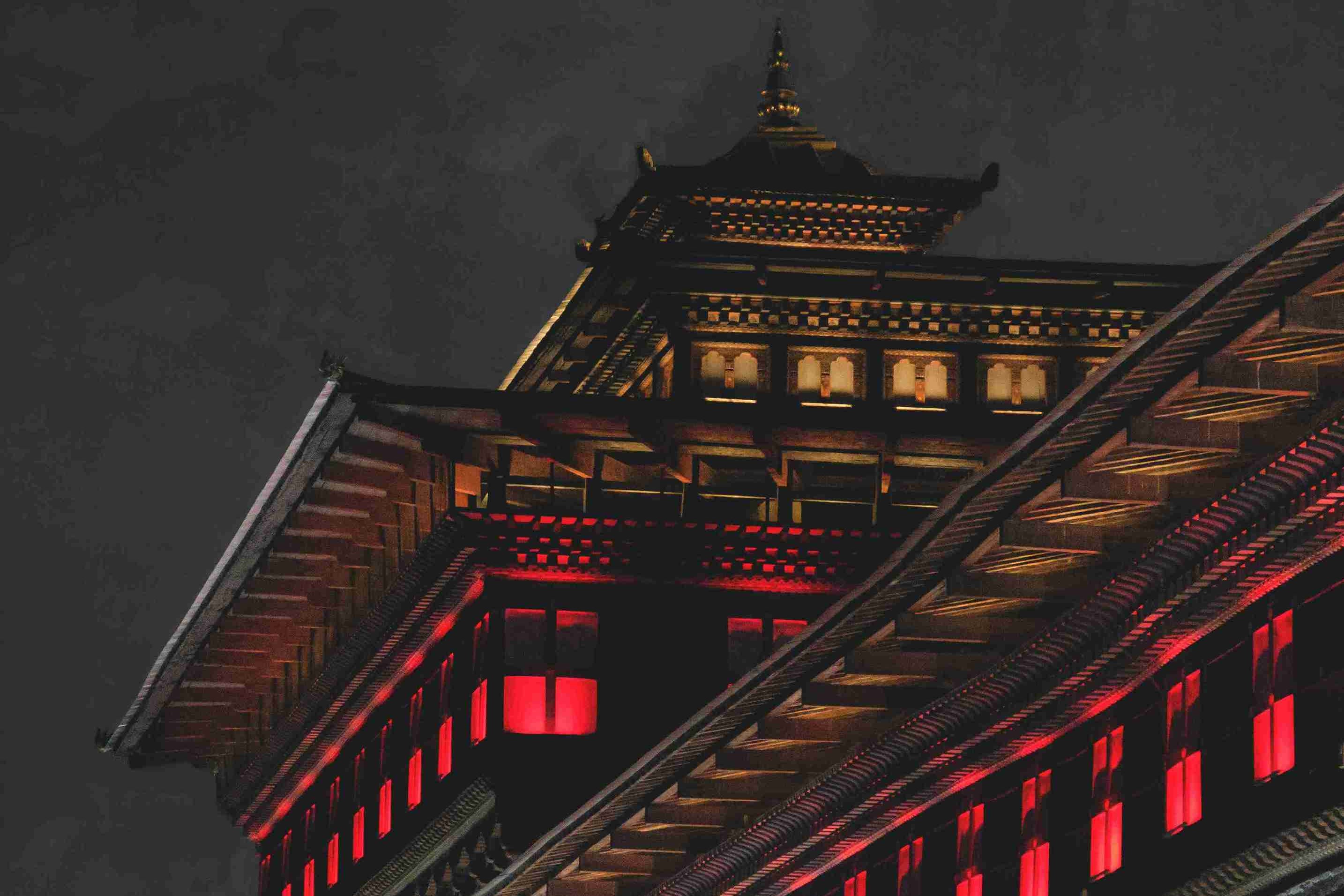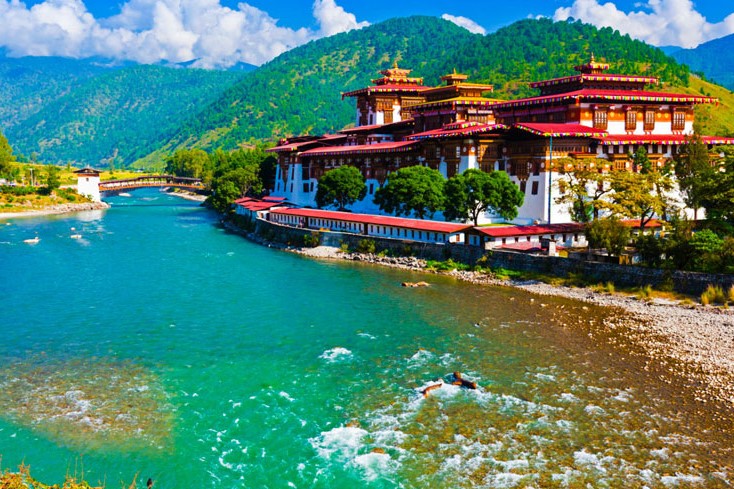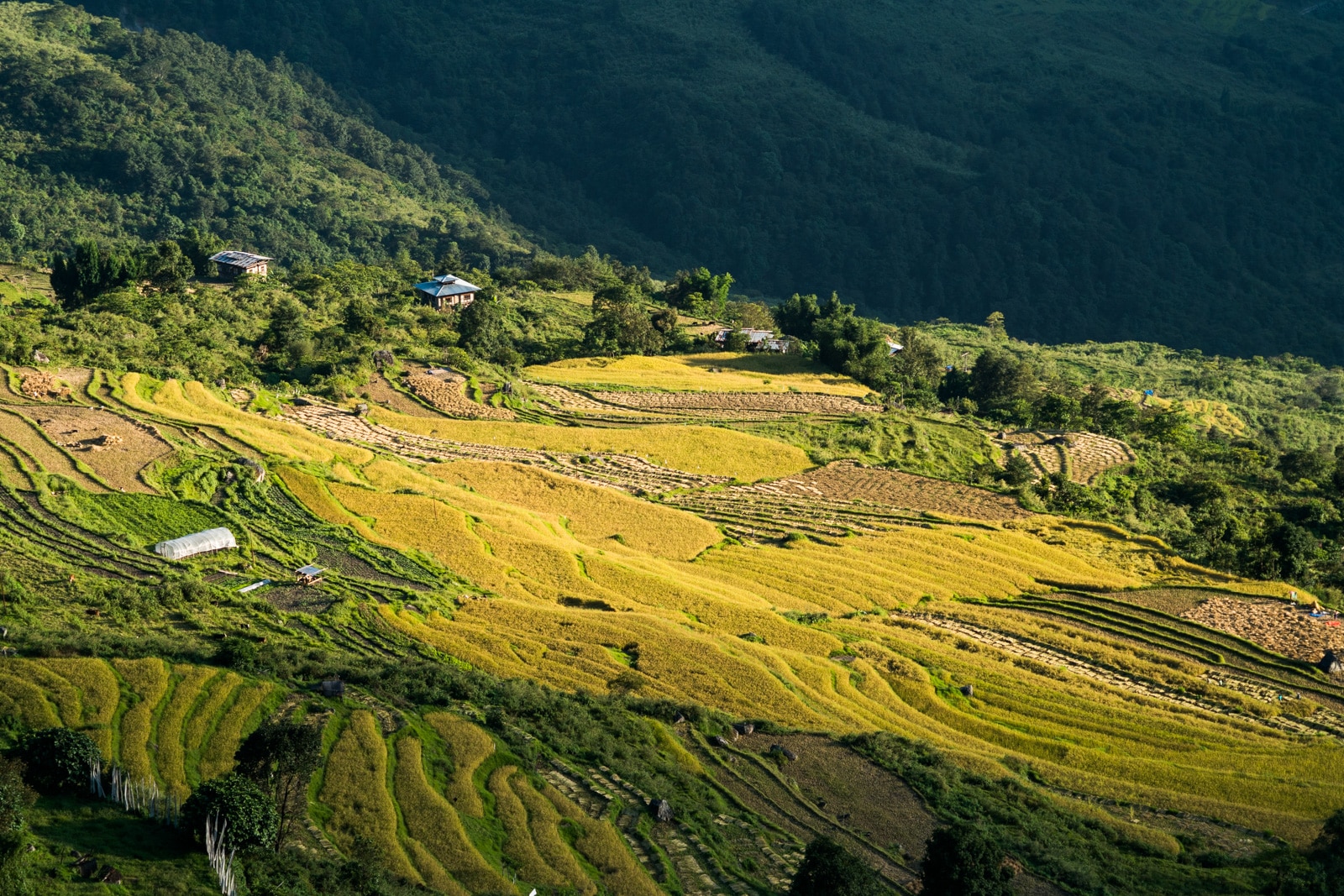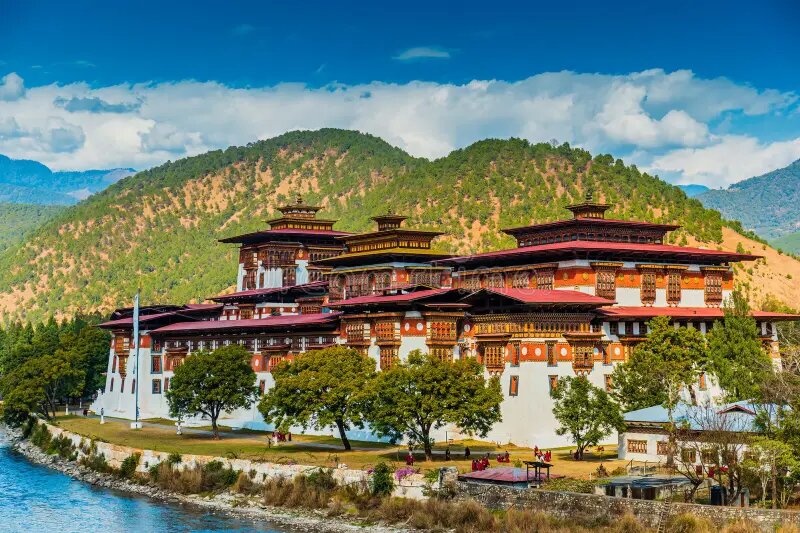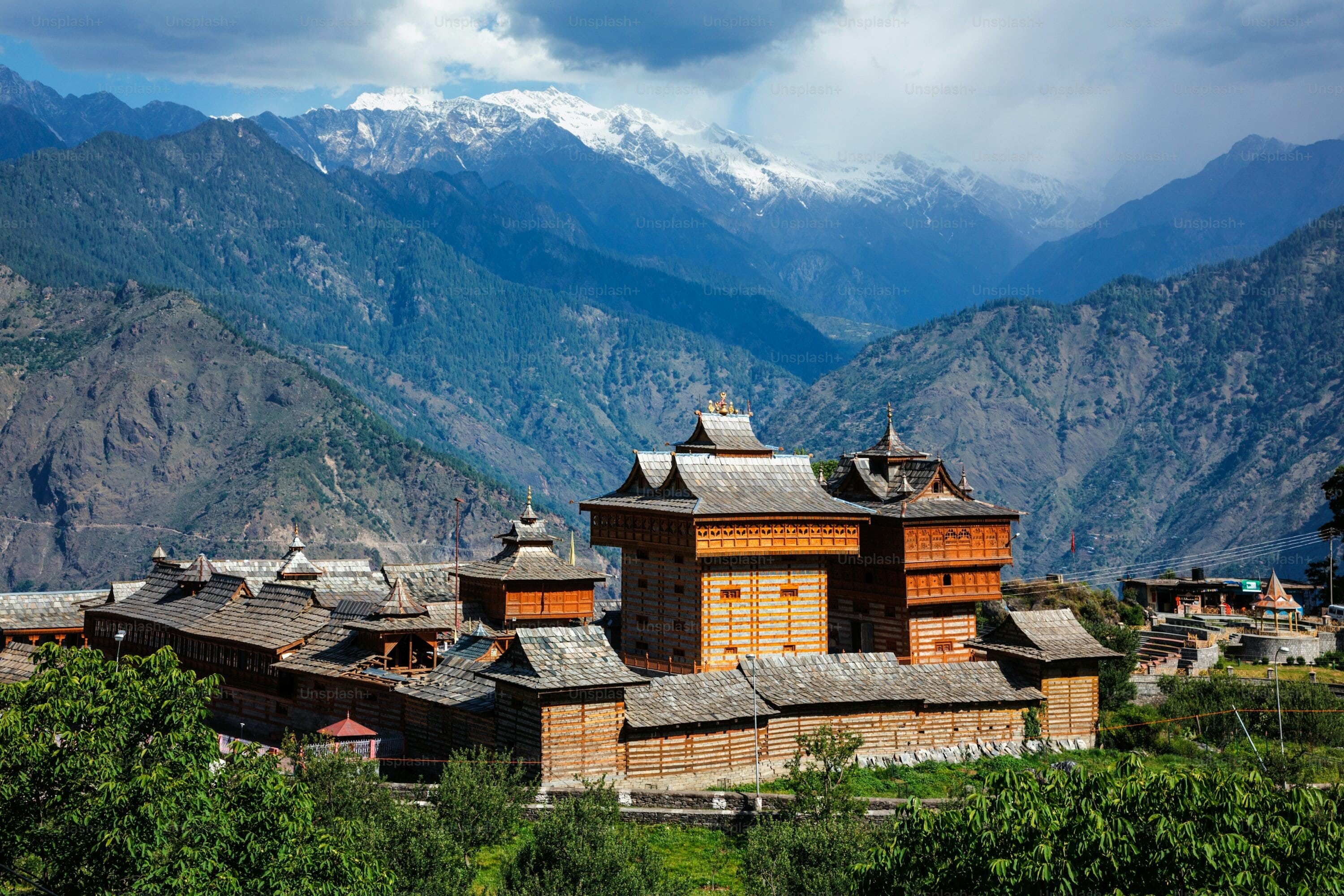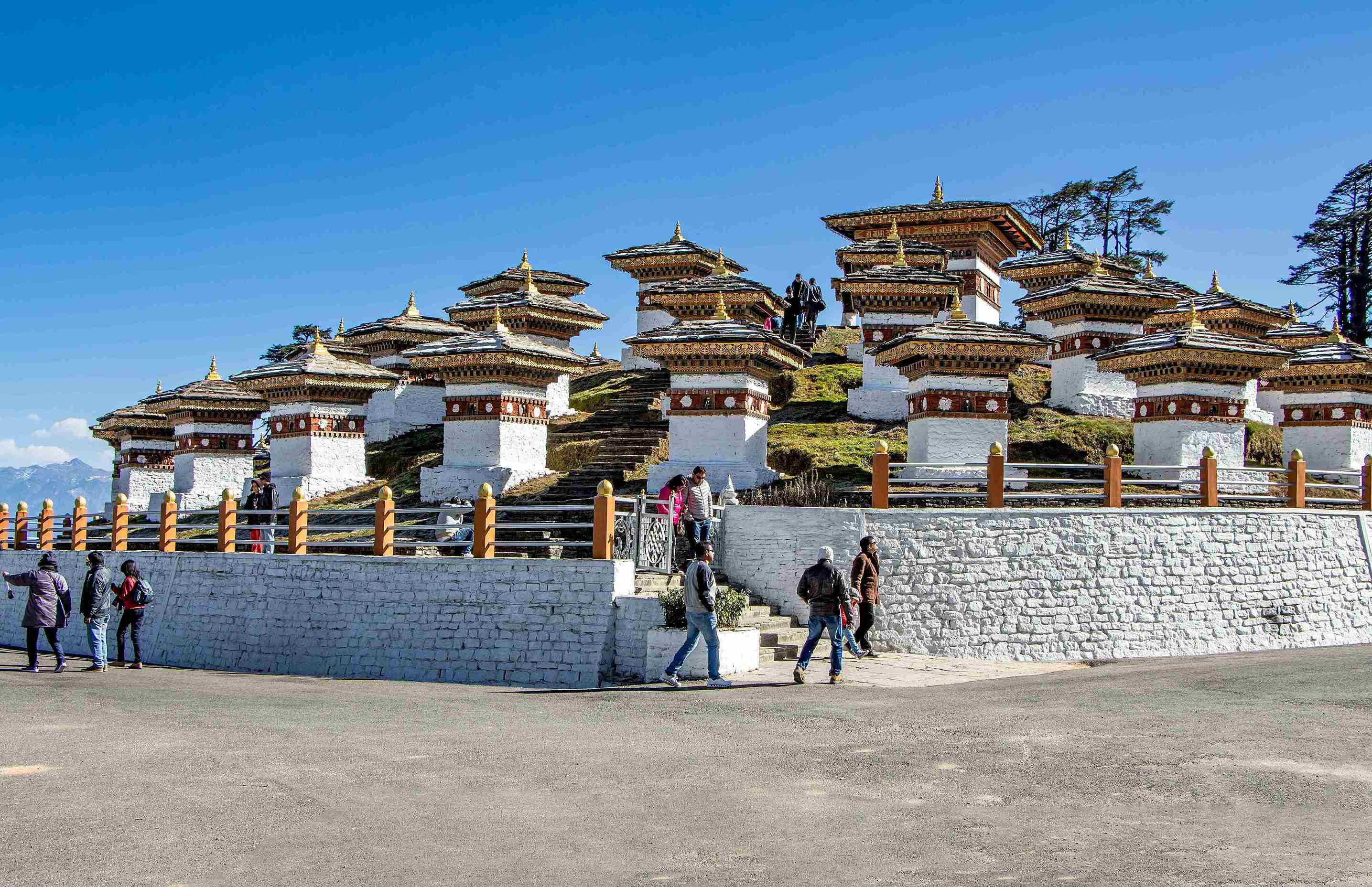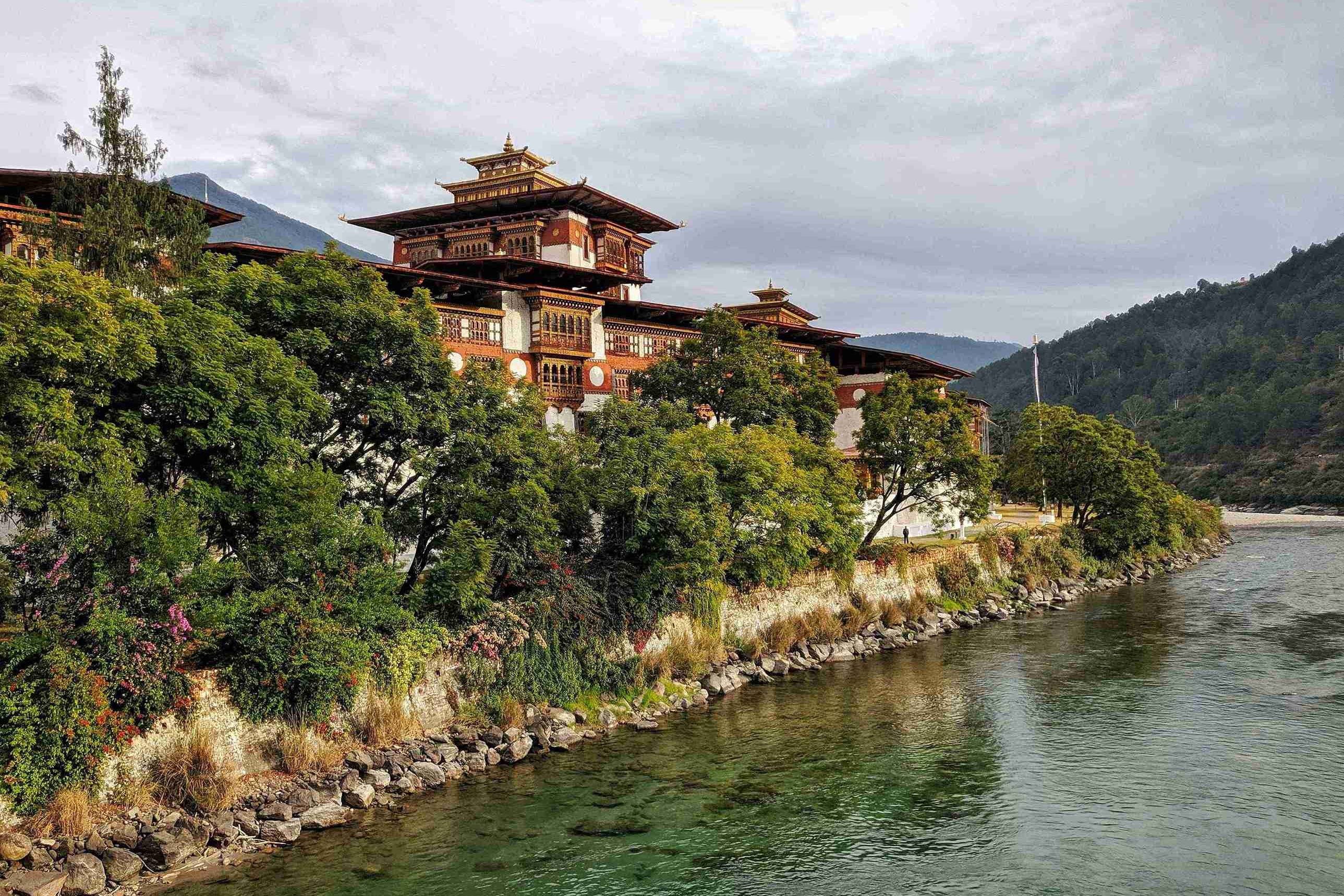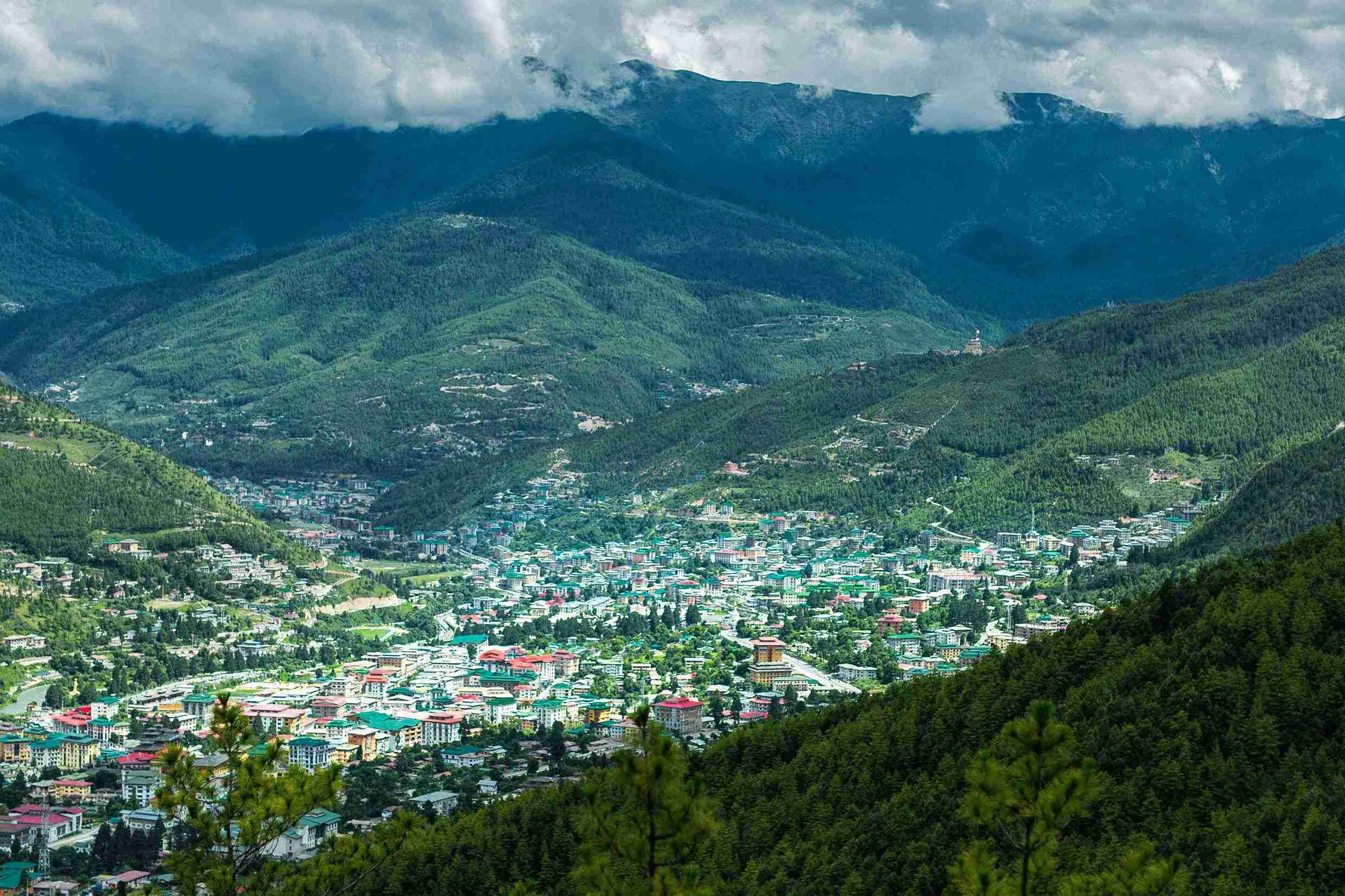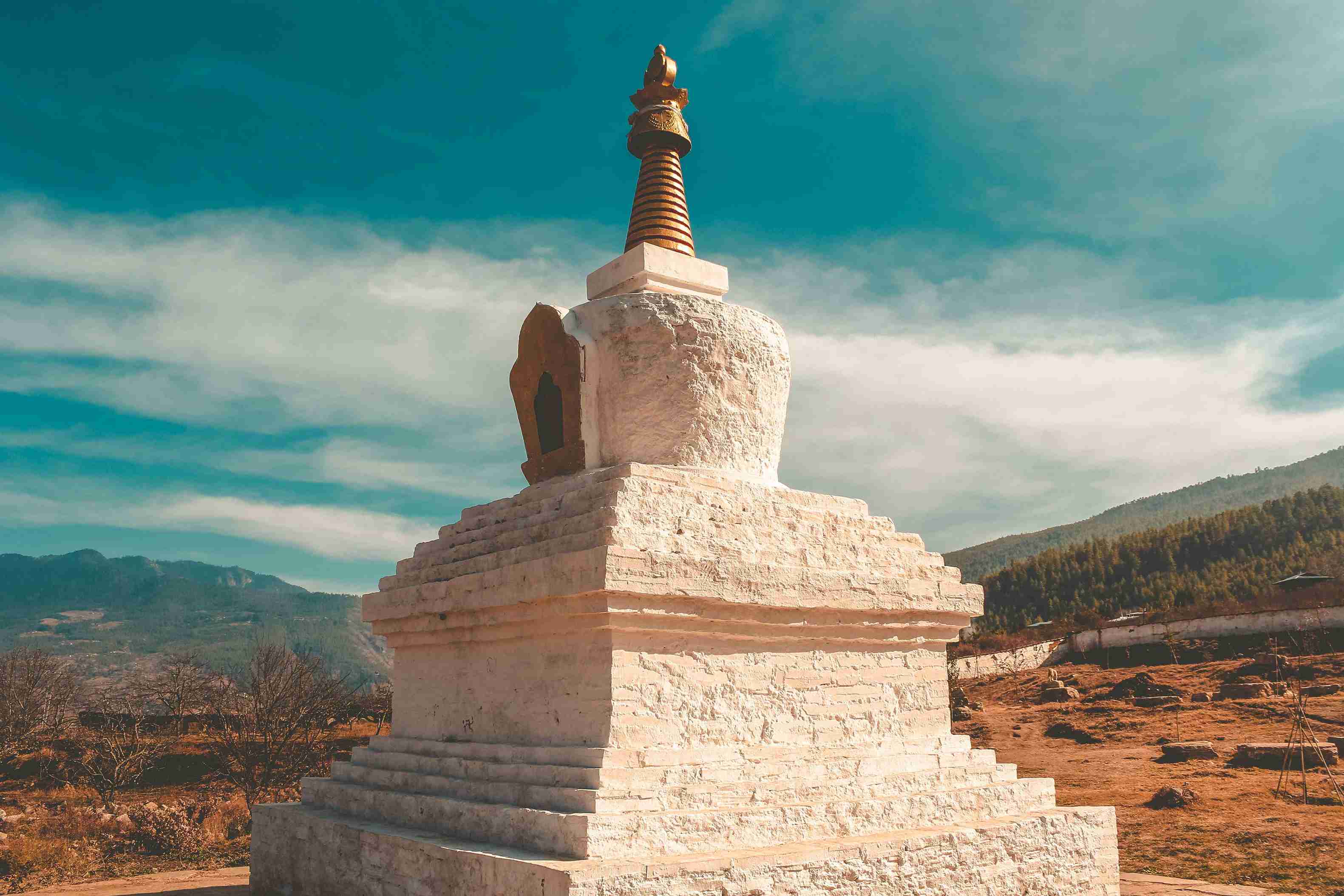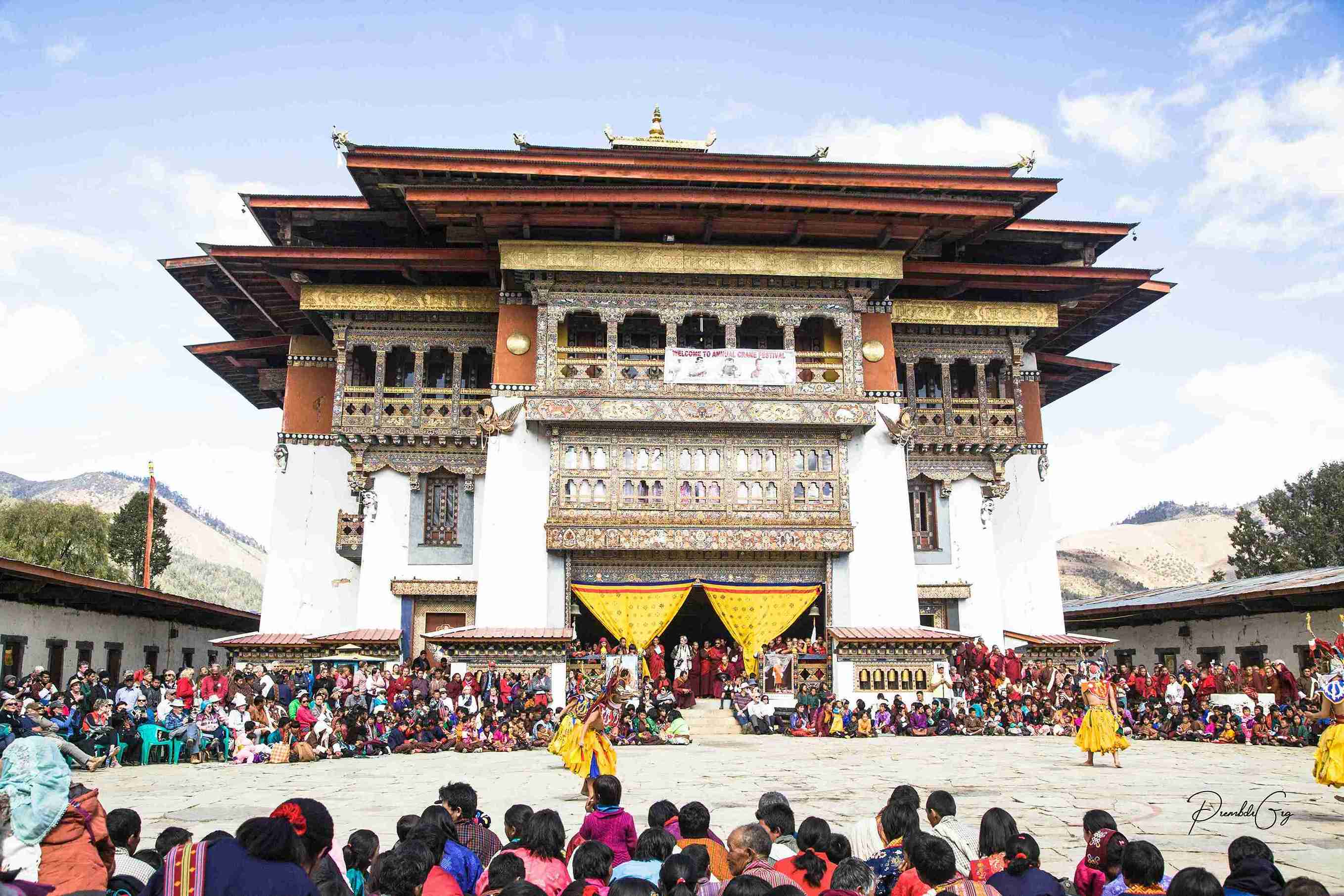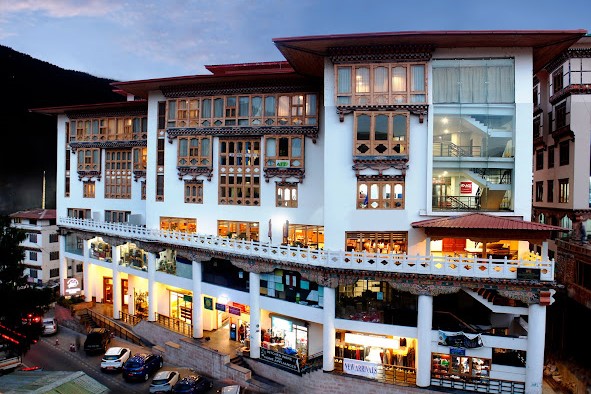
Enchanted Journeys: Discovering the Heart and Soul of Bhutan
Embark on an unforgettable 15-day journey through Bhutan, where you will explore the majestic landscapes and rich cultural heritage of this enchanting kingdom. Starting in Paro, you will traverse vibrant cities like Thimphu, Punakha, and Bumthang, experiencing breathtaking sights such as the iconic Taktsang Monastery, the architectural wonders of dzongs, and the warmth of local markets. Engage with traditional artisans, savor delicious Bhutanese cuisine, and immerse yourself in the country’s spiritual essence. Each destination offers unique adventures and serene moments, culminating in a deep appreciation for the beauty and tranquility of Bhutan. This journey promises to leave you inspired and connected to the heart and soul of this remarkable land.
Quick Facts:
- Duration: 10 Days 9 Nights
- Start Point: Paro
- End Point: Paro
- Route: Airport - Paro - Thimphu - Trongsa - Bumthang - Mongar - Trashigang - Trashiyangtse - Trashigang -Bumthang - Punakha - Paro - Airport

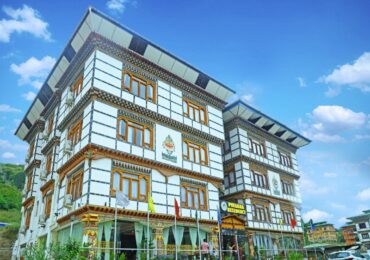
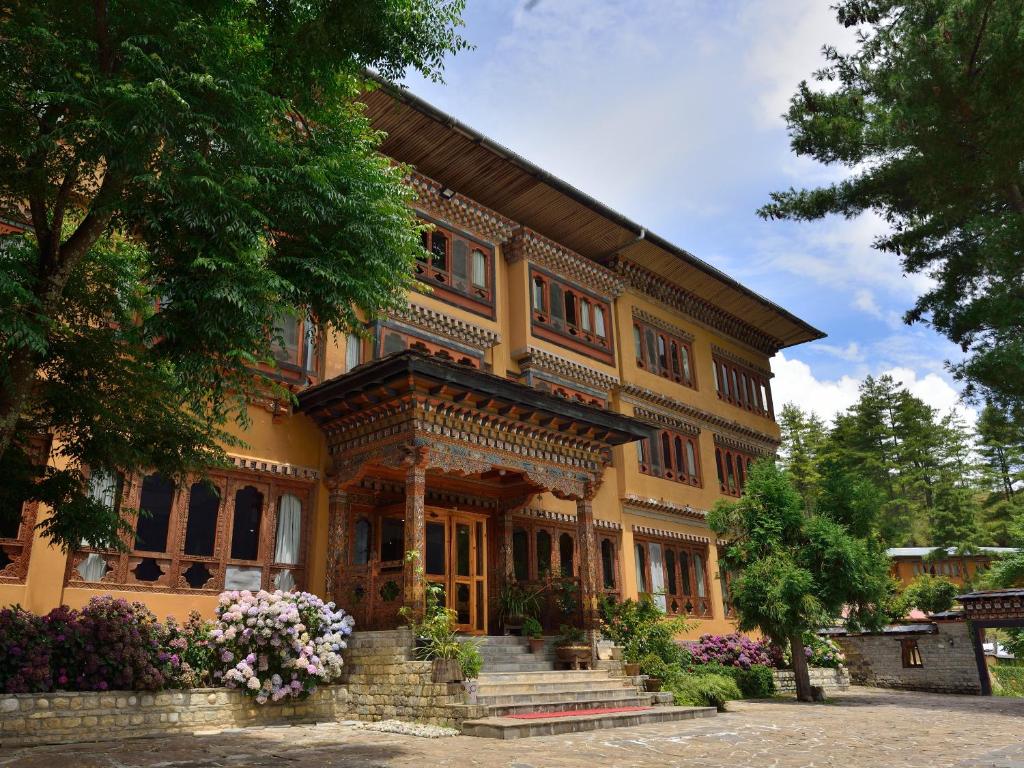

Buddha Dordenma Statue Thimpu, Bhutan, Bhutan
The Buddha Dordenma Statue is a magnificent bronze statue located atop a hill in the Kuenselphodrang Nature Park, overlooking Thimphu, Bhutan. Standing at an impressive 51.5 meters (169 feet), it is one of the largest Buddha statues in the world. Commissioned to promote peace, happiness, and harmony, the statue is filled with over 125,000 smaller Buddha statues, each crafted with intricate detail. The site offers panoramic views of the Thimphu Valley, making it a popular destination for both locals and tourists. Visitors can explore the surrounding gardens and meditate in the tranquil atmosphere, immersing themselves in Bhutan’s spiritual heritage.

Tashichho Dzong Thimpu, Bhutan, Bhutan
Tashichho Dzong, also known as the Fortress of the Glorious Religion, is an iconic administrative and religious complex located in Thimphu, Bhutan. Built in the 18th century, it serves as the seat of the government and the central monastic body of Bhutan. The dzong showcases stunning traditional Bhutanese architecture, with intricately carved wooden windows and colorful frescoes. Its impressive courtyard hosts significant ceremonies, including the annual Thimphu Tshechu festival, where vibrant mask dances are performed. Surrounded by beautifully landscaped gardens and a serene river, Tashichho Dzong offers visitors a glimpse into Bhutan’s rich cultural heritage and spiritual traditions.

National Memorial Chorten Thimpu, Bhutan, Bhutan
The National Memorial Chorten, located in Thimphu, Bhutan, is a revered Buddhist stupa built in memory of the third king, His Majesty King Jigme Dorji Wangchuck, who is often called the "Father of Modern Bhutan." Completed in 1974, the chorten features a white dome and a golden spire, adorned with intricate carvings and colorful prayer flags. It serves as a focal point for locals, who gather to circumambulate and engage in prayer and meditation. The vibrant atmosphere, filled with the sounds of chanting and spinning prayer wheels, offers visitors a deep insight into Bhutanese spirituality and cultural practices.

National Institute of Traditional Medicine Thimpu, Bhutan, Bhutan
The National Institute of Traditional Medicine (NITM) in Thimphu, Bhutan, is a renowned institution dedicated to the study and practice of traditional Bhutanese medicine, rooted in ancient healing techniques and herbal remedies. Established in 1998, the institute aims to preserve and promote Bhutan’s rich medicinal heritage through education, research, and the training of practitioners. Visitors can explore the institute’s herbal gardens, which showcase a variety of indigenous plants used in traditional medicine. NITM also plays a crucial role in integrating traditional healing with modern healthcare practices, emphasizing the importance of holistic well-being in Bhutan’s healthcare system.

Folk Heritage Museum Thimpu, Bhutan, Bhutan
The Folk Heritage Museum in Bhutan offers a captivating glimpse into the nation’s traditional way of life. Nestled in Thimphu, this living museum showcases Bhutanese rural heritage through meticulously preserved artifacts, exhibits, and interactive displays. Visitors can explore a typical farmhouse, complete with period furnishings and tools that illustrate daily life in the past. Engaging workshops and demonstrations provide insight into age-old crafts, from weaving to pottery. Surrounded by lush gardens, the museum invites travelers to immerse themselves in Bhutan’s rich culture and heritage. Experience the warmth of Bhutanese hospitality and the timeless traditions that shape this enchanting nation.

Textile Museum Thimpu, Bhutan, Bhutan
The National Textile Museum in Bhutan is a vibrant tribute to the country’s rich weaving heritage and cultural artistry. Located in Thimphu, this museum showcases an exquisite collection of traditional textiles, including intricate kira and gho garments, colorful thangka paintings, and handcrafted accessories. Visitors can explore the fascinating history of Bhutanese textiles through engaging exhibits and live demonstrations by skilled artisans. The museum not only highlights the significance of textiles in Bhutanese culture but also provides insights into sustainable practices and local craftsmanship. Experience the artistry and tradition that define Bhutan at this captivating destination, perfect for culture enthusiasts and history buffs alike.

Dochula Pass, located at an elevation of 3,100 meters (10,171 feet), is a stunning mountain pass situated approximately 30 kilometers from Thimphu, Bhutan. It is renowned for its breathtaking panoramic views of the eastern Himalayas, especially on clear days. The pass is marked by the Druk Wangyal Chortens, a beautiful array of 108 stupas built in honor of the fourth king of Bhutan. Visitors can explore the serene landscape, which features prayer flags fluttering in the wind and lush gardens. Dochula Pass serves as both a scenic stop and a cultural landmark, embodying Bhutan's rich spiritual heritage and natural beauty.

Punakha Dzong, often hailed as Bhutan’s most stunning fortress, is a breathtaking blend of history, architecture, and natural beauty. Nestled at the confluence of the Pho and Mo Chhu rivers, this majestic dzong, built in 1637, is renowned for its intricate woodwork, vibrant murals, and impressive courtyards. Visitors can explore the grand halls and serene temples while soaking in panoramic views of the surrounding lush valleys and terraced rice fields. The dzong also holds significant cultural importance, hosting the annual Punakha Tshechu festival. Experience the tranquility and grandeur of Punakha Dzong, a true highlight of any Bhutanese adventure.

Chumey Valley Thimpu, Bhutan, Bhutan
Chume Valley, a hidden gem in Bhutan, invites travelers to experience its breathtaking natural beauty and rich cultural traditions. Nestled in the heart of Bumthang, this enchanting valley is renowned for its picturesque landscapes, with rolling hills, pristine rivers, and lush fields. Chume Valley is also famous for its vibrant textile weaving, where skilled artisans create intricate patterns and colorful fabrics. Visitors can immerse themselves in the local culture by exploring charming villages and participating in traditional festivals. With its serene atmosphere and stunning scenery, Chume Valley is the perfect destination for those seeking adventure, tranquility, and a taste of authentic Bhutanese life.

Jakar Dzong Bumthang, Bhutan, Bhutan
Jakar Dzong, known as the "Castle of the White Bird," is a breathtaking fortress that stands as a testament to Bhutan’s rich history and architectural brilliance. Located in the scenic Bumthang Valley, this stunning dzong dates back to the 17th century and offers mesmerizing views of the surrounding landscape. Visitors can explore its impressive halls, intricately decorated temples, and vibrant murals that depict Bhutanese culture and spirituality. The dzong also serves as the administrative center of Bumthang, making it a lively hub during local festivals. Experience the magic of Jakar Dzong, where history, culture, and stunning scenery converge in perfect harmony.

Kurjey Lhakhang Bumthang, Bhutan, Bhutan
Kurjey Lhakhang, a revered sacred site in Bhutan, is a must-visit for those seeking spiritual enrichment and cultural immersion. Located in the picturesque Bumthang Valley, this stunning monastery complex is dedicated to Guru Rinpoche, who is believed to have meditated here, leaving his body imprint in a sacred cave. Visitors can explore the intricately adorned temples, featuring vibrant murals and ornate sculptures that reflect Bhutanese artistry. Surrounded by serene landscapes and tranquil gardens, Kurjey Lhakhang offers a peaceful atmosphere perfect for reflection. Experience the spiritual essence and breathtaking beauty of this remarkable destination on your Bhutanese journey.

Ura Valley, a hidden gem in Bhutan, captivates travelers with its stunning natural beauty and authentic rural charm. Nestled at a high altitude, this enchanting valley is surrounded by lush forests, rolling hills, and picturesque farmland, making it perfect for nature lovers and adventure seekers alike. Visitors can explore the charming Ura village, known for its traditional stone houses and vibrant culture, while experiencing the warmth of local hospitality. The valley is also home to ancient temples and stunning hiking trails that offer breathtaking views. Discover the serene beauty and rich traditions of Ura Valley, an unforgettable destination in the heart of Bhutan.

Trongsa Dzong, a magnificent fortress perched high on a hilltop, is a cultural masterpiece that offers breathtaking views of the Bhutanese landscape. This impressive structure, built in the 17th century, serves as the ancestral home of the royal family and showcases stunning traditional architecture adorned with intricate woodwork and vibrant paintings. As you explore its maze-like corridors and sacred temples, you'll gain insight into Bhutan's rich history and religious heritage. The surrounding area is equally enchanting, with lush valleys and dramatic mountains. A visit to Trongsa Dzong promises an unforgettable journey into Bhutan’s past and a deeper appreciation of its vibrant culture.

Yongphula Airport is a small domestic airport located near the town of Trashigang in eastern Bhutan. Opened in 2011, it serves as a crucial connection for travelers to this remote region, facilitating access to the scenic landscapes and vibrant culture of eastern Bhutan. The airport operates flights primarily to and from Paro Airport, making it an essential link for residents and tourists alike. Surrounded by mountains, Yongphula offers stunning views, adding to the travel experience. The airport plays a vital role in promoting tourism and enhancing local connectivity, supporting both economic development and cultural exchange in the area.

Mongar Market is a bustling hub in Mongar, Bhutan, reflecting the vibrant local culture and community life. Held regularly, the market showcases a diverse array of goods, including fresh produce, traditional handicrafts, textiles, and spices. It serves as an important meeting point for locals and visitors, fostering social interactions and commerce. The market's lively atmosphere is enriched by the presence of vendors selling colorful wares and traditional Bhutanese foods. Visitors can immerse themselves in the local way of life, sample authentic dishes, and purchase unique souvenirs. Mongar Market is a must-visit for anyone seeking an authentic Bhutanese experience.

Zangdopelri Handicrafts is a renowned establishment in Bhutan, celebrated for its exquisite traditional crafts and textiles. Located in the heart of Paro, this shop offers a wide range of Bhutanese handicrafts, including intricately woven fabrics, hand-carved wooden items, and beautifully crafted jewelry. The artisans employ age-old techniques, ensuring that each piece reflects Bhutan’s rich cultural heritage. Visitors can explore unique souvenirs, from colorful scarves to intricate thangkas (traditional paintings). Zangdopelri Handicrafts not only promotes local craftsmanship but also supports the livelihoods of artisans, making it a significant cultural and economic contributor in Bhutan's thriving handicraft sector.

National Institute of Zorig Chusum Trashigang, Bhutan
The National Institute of Zorig Chusum, located in Thimphu, Bhutan, is a premier institution dedicated to preserving and promoting the country's traditional arts and crafts. Established in 1999, it offers comprehensive training in the 13 core arts of Bhutanese craftsmanship, including painting, sculpting, woodworking, and textile weaving. The institute aims to equip students with the skills needed to carry on Bhutan's rich artistic heritage while fostering innovation within traditional frameworks. Through hands-on learning and expert guidance, students produce stunning works that reflect Bhutanese culture. The institute also plays a vital role in cultural preservation, ensuring these arts thrive for future generations.

Radhi Valley Trashigang, Bhutan
Radhi Valley, located in eastern Bhutan, is a picturesque region renowned for its stunning landscapes and rich agricultural heritage. Often referred to as the "Rice Bowl of Bhutan," the valley is famous for its high-quality rice, particularly the red rice variety, which is a staple in Bhutanese cuisine. The area is surrounded by lush hills and terraced fields, creating a serene environment for farming and outdoor activities. Radhi Valley is also home to the Radhi Dzong, a historic fortress that showcases traditional Bhutanese architecture. The valley offers visitors a glimpse into rural life and the beauty of Bhutan’s natural and cultural heritage.

Dramitse Trashigang, Bhutan
Dramitse is a small but culturally rich village located in eastern Bhutan, near the town of Mongar. It is best known for the Dramitse Monastery, a significant religious site founded in the 16th century by the revered master Zhabdrung Ngawang Namgyal. The monastery is famous for its vibrant wall paintings and traditional Bhutanese architecture, serving as a center for spiritual practices and festivals. Dramitse is also renowned for the Dramitse Ngacham, a traditional dance that symbolizes the triumph of good over evil, often performed during local festivals. The village's serene surroundings and cultural heritage make it a charming destination for visitors seeking authenticity.

Drametse Lhakhang Trashigang, Bhutan
Drametse Lhakhang, located in the village of Dramitse in eastern Bhutan, is a revered monastery known for its rich spiritual and cultural heritage. Built in the 16th century by the legendary saint Zhabdrung Ngawang Namgyal, the lhakhang is an important pilgrimage site. It features stunning traditional Bhutanese architecture, with intricately painted murals depicting Buddhist deities and teachings. The monastery is also famous for the Dramitse Ngacham, a traditional dance performed during festivals, which embodies the triumph of good over evil. Surrounded by picturesque landscapes, Drametse Lhakhang offers visitors a profound insight into Bhutanese spirituality and the region's vibrant cultural traditions.

Kanglung Village Trashiyangtse, Bhutan
Kanglung Village is a charming settlement located in eastern Bhutan, near the town of Trashigang. Known for its stunning natural beauty and traditional rural lifestyle, Kanglung offers visitors a glimpse into Bhutanese culture and community life. The village is home to the Jigme Namgyel Polytechnic, which provides technical education to students from across the country. Surrounded by lush hills and terraced fields, Kanglung is an ideal spot for exploring nature and enjoying scenic views. The local community is warm and welcoming, often engaging in traditional farming practices and crafts, making it a wonderful destination for cultural immersion and rural tourism.

Kanglung Monastery Trashiyangtse, Bhutan
Kanglung Monastery, also known as Kanglung Lhakhang, is a significant Buddhist site located in the picturesque Kanglung Village of eastern Bhutan. Established in the 15th century, the monastery is dedicated to the Nyingma tradition of Tibetan Buddhism. It is renowned for its serene ambiance and beautifully preserved architecture, featuring intricate wall paintings and statues that depict various deities. The monastery plays a vital role in the spiritual life of the local community, hosting regular prayers and festivals. Surrounded by stunning natural landscapes, Kanglung Monastery offers visitors a peaceful retreat, showcasing the rich cultural and religious heritage of Bhutan.

Trashiyangtse Dzong Trashiyangtse, Bhutan
Trashiyangtse Dzong is a historic fortress-monastery located in the town of Trashiyangtse, eastern Bhutan. Built in the 17th century by the revered Zhabdrung Ngawang Namgyal, it serves as the administrative and religious center of the Trashiyangtse District. The dzong is an architectural marvel, showcasing traditional Bhutanese design with intricate woodwork and vibrant murals. It plays a crucial role in the local community, hosting important religious ceremonies and festivals. The dzong's strategic position offers stunning views of the surrounding valleys and mountains, making it a must-visit destination for those interested in Bhutan's rich cultural and historical heritage.

Bumthang Market Bumthang, Bhutan, Bhutan
Bumthang Market, located in the heart of Bumthang Valley, is a vibrant marketplace that reflects the rich cultural heritage of Bhutan. The market offers a wide array of local products, including fresh produce, traditional handicrafts, textiles, and organic goods, providing visitors with a taste of authentic Bhutanese life. It is a gathering place for locals and travelers alike, creating a lively atmosphere filled with the sounds of bargaining and conversation. Visitors can explore unique souvenirs, sample local delicacies, and interact with friendly vendors. The market is particularly lively during festivals, showcasing the region's traditions and craftsmanship in a delightful setting.

Thangka Paintings Bumthang, Bhutan, Bhutan
Thangka paintings are a significant form of Tibetan Buddhist art in Bhutan, serving both religious and cultural purposes. These intricate scroll paintings are typically created on cotton or silk and depict deities, mandalas, and spiritual teachings. Each thangka is meticulously detailed, showcasing vibrant colors and fine brushwork, often incorporating gold leaf for added luminosity. Thangkas are used as teaching tools and aids in meditation, helping practitioners visualize sacred concepts. Artists, known as "thangka painters," undergo extensive training to master this traditional craft, which plays a vital role in preserving Bhutan’s spiritual heritage and artistic expression. They are often displayed in monasteries and homes.

Bumthang Cheese Factory Bumthang, Bhutan, Bhutan
The Bumthang Cheese Factory, located in the scenic Bumthang Valley, is a unique establishment dedicated to producing high-quality dairy products in Bhutan. Established in 2013, the factory specializes in a variety of cheeses, including traditional Bhutanese varieties like "churpi" and Western-style cheeses such as cheddar. It aims to promote local dairy farming and support rural livelihoods by sourcing milk from local farmers. Visitors to the factory can tour the facilities, learn about the cheese-making process, and sample delicious products. The factory not only contributes to Bhutan’s culinary diversity but also plays a vital role in fostering sustainable agriculture and rural development.

Trongsa Dzong Punakha, Bhutan, Bhutan
Trongsa Dzong, a magnificent fortress perched high on a hilltop, is a cultural masterpiece that offers breathtaking views of the Bhutanese landscape. This impressive structure, built in the 17th century, serves as the ancestral home of the royal family and showcases stunning traditional architecture adorned with intricate woodwork and vibrant paintings. As you explore its maze-like corridors and sacred temples, you'll gain insight into Bhutan's rich history and religious heritage. The surrounding area is equally enchanting, with lush valleys and dramatic mountains. A visit to Trongsa Dzong promises an unforgettable journey into Bhutan’s past and a deeper appreciation of its vibrant culture.

Chendebji Chorten Punakha, Bhutan, Bhutan
Chendebji Chorten, a mesmerizing stupa nestled in the enchanting landscape of Bhutan, is a must-visit for travelers seeking spiritual and cultural experiences. Located near the scenic Chendebji village, this unique chorten features a distinctive design inspired by the iconic Bodhnath Stupa in Nepal. Surrounded by lush greenery and tranquil mountains, Chendebji Chorten offers a serene atmosphere perfect for reflection and meditation. Visitors can marvel at the intricate murals and prayer flags fluttering in the breeze while learning about its rich history and significance in Bhutanese Buddhism. Experience the peaceful charm and spiritual heritage of Bhutan at this hidden gem.

Punakha Valley Punakha, Bhutan, Bhutan
Punakha Valley, located in central Bhutan, is renowned for its breathtaking landscapes and rich cultural heritage. The valley is home to the iconic Punakha Dzong, one of Bhutan's most magnificent fortresses, situated at the confluence of the Pho Chhu and Mo Chhu rivers. Known for its fertile soil, Punakha is a major agricultural hub, producing rice, fruits, and vegetables. The valley's stunning scenery includes terraced fields, lush forests, and majestic mountains, making it a popular destination for trekking and outdoor activities. With its tranquil atmosphere and vibrant festivals, Punakha Valley offers visitors a unique blend of natural beauty and cultural experiences.

Punakha Market Punakha, Bhutan, Bhutan
Punakha Market is a lively and vibrant hub located in the heart of Punakha, Bhutan. It serves as a crucial center for trade and commerce, where locals gather to buy and sell a variety of goods. The market offers a diverse array of products, including fresh produce, traditional handicrafts, textiles, and spices, reflecting the region's rich agricultural and cultural heritage. Visitors can experience the bustling atmosphere, interact with friendly vendors, and sample local delicacies. The market is particularly vibrant during festivals, showcasing the unique customs and traditions of the area, making it a must-visit destination for anyone exploring Punakha.
Journey to the Heart of Bhutan: Arrival in Paro and Transfer to Thimphu
On your first day in Bhutan, you will arrive at Paro International Airport, where the stunning Himalayan landscape greets you. After clearing customs, you will be warmly welcomed and transferred to your private vehicle for a scenic drive to Thimphu, the vibrant capital of Bhutan. The journey takes approximately one hour, allowing you to relax and take in the beautiful views along the way. Upon arrival in Thimphu, check into your hotel, where you can unwind and prepare for the exciting adventures that await you in this enchanting country. Enjoy a restful overnight stay in the serene surroundings of Thimphu.
Discovering Thimphu: A Day of Cultural Riches
After a hearty breakfast, embark on an exciting exploration of Thimphu, Bhutan's lively capital. Begin your day at the Buddha Dordenma, an impressive statue towering over the valley, offering panoramic views and a serene atmosphere. Next, visit the Tashichho Dzong, an architectural marvel that serves as the seat of the government and the monastic body. Continue your journey to the National Memorial Chorten, a sacred site filled with vibrant prayer flags and local devotees. Immerse yourself in Bhutanese art at the National Institute of Traditional Medicine, where ancient healing practices come to life. Don’t miss the Folk Heritage Museum, where you can experience the traditional Bhutanese way of life, and the Textile Museum, showcasing exquisite fabrics and weavings. As the day winds down, take a leisurely stroll through the bustling streets of Thimphu, absorbing the local culture and atmosphere. Return to your hotel for an overnight stay, reflecting on the rich experiences of the day.
Buddha Dordenma Statue
The Buddha Dordenma Statue is a magnificent bronze statue located atop a hill in the Kuenselphodrang Nature Park, overlooking Thimphu, Bhutan. Standing at an impressive 51.5 meters (169 feet), it is one of the largest Buddha statues in the world. Commissioned to promote peace, happiness, and harmony, the statue is filled with over 125,000 smaller Buddha statues, each crafted with intricate detail. The site offers panoramic views of the Thimphu Valley, making it a popular destination for both locals and tourists. Visitors can explore the surrounding gardens and meditate in the tranquil atmosphere, immersing themselves in Bhutan’s spiritual heritage.
Tashichho Dzong
Tashichho Dzong, also known as the Fortress of the Glorious Religion, is an iconic administrative and religious complex located in Thimphu, Bhutan. Built in the 18th century, it serves as the seat of the government and the central monastic body of Bhutan. The dzong showcases stunning traditional Bhutanese architecture, with intricately carved wooden windows and colorful frescoes. Its impressive courtyard hosts significant ceremonies, including the annual Thimphu Tshechu festival, where vibrant mask dances are performed. Surrounded by beautifully landscaped gardens and a serene river, Tashichho Dzong offers visitors a glimpse into Bhutan’s rich cultural heritage and spiritual traditions.
National Memorial Chorten
The National Memorial Chorten, located in Thimphu, Bhutan, is a revered Buddhist stupa built in memory of the third king, His Majesty King Jigme Dorji Wangchuck, who is often called the "Father of Modern Bhutan." Completed in 1974, the chorten features a white dome and a golden spire, adorned with intricate carvings and colorful prayer flags. It serves as a focal point for locals, who gather to circumambulate and engage in prayer and meditation. The vibrant atmosphere, filled with the sounds of chanting and spinning prayer wheels, offers visitors a deep insight into Bhutanese spirituality and cultural practices.
National Institute of Traditional Medicine
The National Institute of Traditional Medicine (NITM) in Thimphu, Bhutan, is a renowned institution dedicated to the study and practice of traditional Bhutanese medicine, rooted in ancient healing techniques and herbal remedies. Established in 1998, the institute aims to preserve and promote Bhutan’s rich medicinal heritage through education, research, and the training of practitioners. Visitors can explore the institute’s herbal gardens, which showcase a variety of indigenous plants used in traditional medicine. NITM also plays a crucial role in integrating traditional healing with modern healthcare practices, emphasizing the importance of holistic well-being in Bhutan’s healthcare system.
Folk Heritage Museum
The Folk Heritage Museum in Bhutan offers a captivating glimpse into the nation’s traditional way of life. Nestled in Thimphu, this living museum showcases Bhutanese rural heritage through meticulously preserved artifacts, exhibits, and interactive displays. Visitors can explore a typical farmhouse, complete with period furnishings and tools that illustrate daily life in the past. Engaging workshops and demonstrations provide insight into age-old crafts, from weaving to pottery. Surrounded by lush gardens, the museum invites travelers to immerse themselves in Bhutan’s rich culture and heritage. Experience the warmth of Bhutanese hospitality and the timeless traditions that shape this enchanting nation.
Textile Museum
The National Textile Museum in Bhutan is a vibrant tribute to the country’s rich weaving heritage and cultural artistry. Located in Thimphu, this museum showcases an exquisite collection of traditional textiles, including intricate kira and gho garments, colorful thangka paintings, and handcrafted accessories. Visitors can explore the fascinating history of Bhutanese textiles through engaging exhibits and live demonstrations by skilled artisans. The museum not only highlights the significance of textiles in Bhutanese culture but also provides insights into sustainable practices and local craftsmanship. Experience the artistry and tradition that define Bhutan at this captivating destination, perfect for culture enthusiasts and history buffs alike.
Scenic Journey to Trongsa: Unveiling Bhutan’s Hidden Treasures
On Day 03, enjoy a delicious breakfast before embarking on your journey from Thimphu to Trongsa in your private vehicle. The drive takes approximately 6 to 7 hours, offering you breathtaking views of the Bhutanese landscape. As you ascend through the mountains, stop at the picturesque Dochu La Pass, where you can marvel at the stunning 108 chortens and, on a clear day, enjoy panoramic views of the Eastern Himalayas. The serene environment is perfect for a short break and some memorable photographs.Continue your journey to Punakha, where you can briefly visit the iconic Punakha Dzong, known for its stunning architecture and riverside location at the confluence of the Pho and Mo Chhu rivers. As you drive further into the heart of Bhutan, take in the captivating scenery of terraced fields and traditional villages. Finally, upon arrival in Trongsa, check into your hotel for a restful overnight stay, reflecting on the day’s beautiful discoveries.
Dochu La Pass
Dochula Pass, located at an elevation of 3,100 meters (10,171 feet), is a stunning mountain pass situated approximately 30 kilometers from Thimphu, Bhutan. It is renowned for its breathtaking panoramic views of the eastern Himalayas, especially on clear days. The pass is marked by the Druk Wangyal Chortens, a beautiful array of 108 stupas built in honor of the fourth king of Bhutan. Visitors can explore the serene landscape, which features prayer flags fluttering in the wind and lush gardens. Dochula Pass serves as both a scenic stop and a cultural landmark, embodying Bhutan's rich spiritual heritage and natural beauty.
Punakha Dzong
Punakha Dzong, often hailed as Bhutan’s most stunning fortress, is a breathtaking blend of history, architecture, and natural beauty. Nestled at the confluence of the Pho and Mo Chhu rivers, this majestic dzong, built in 1637, is renowned for its intricate woodwork, vibrant murals, and impressive courtyards. Visitors can explore the grand halls and serene temples while soaking in panoramic views of the surrounding lush valleys and terraced rice fields. The dzong also holds significant cultural importance, hosting the annual Punakha Tshechu festival. Experience the tranquility and grandeur of Punakha Dzong, a true highlight of any Bhutanese adventure.
En Route to Bumthang: A Journey Through Bhutan’s Cultural Heart
After a nourishing breakfast, you will set off for Bumthang in your private vehicle, a journey that takes approximately 2 to 3 hours. As you travel through the majestic mountains, be sure to stop at Chumey Valley, known for its beautiful landscapes and rich agricultural practices, where you can observe the local lifestyle and traditional Bhutanese farming techniques.Continue your drive to the Jakar Dzong, often referred to as the “Castle of the White Bird”. This historic fortress offers a glimpse into Bhutan's past and provides stunning views of the surrounding valley. As you make your way to Bumthang, take in the scenic beauty of Kurjey Lhakhang, an important pilgrimage site where Guru Rinpoche is believed to have meditated. The serene atmosphere and intricate architecture make it a must-visit.Arriving in Bumthang, check into your hotel for an overnight stay, surrounded by the enchanting landscapes and rich cultural heritage of this region. Reflect on the incredible sights you've encountered and the stories they tell.
Chumey Valley
Chume Valley, a hidden gem in Bhutan, invites travelers to experience its breathtaking natural beauty and rich cultural traditions. Nestled in the heart of Bumthang, this enchanting valley is renowned for its picturesque landscapes, with rolling hills, pristine rivers, and lush fields. Chume Valley is also famous for its vibrant textile weaving, where skilled artisans create intricate patterns and colorful fabrics. Visitors can immerse themselves in the local culture by exploring charming villages and participating in traditional festivals. With its serene atmosphere and stunning scenery, Chume Valley is the perfect destination for those seeking adventure, tranquility, and a taste of authentic Bhutanese life.
Jakar Dzong
Jakar Dzong, known as the "Castle of the White Bird," is a breathtaking fortress that stands as a testament to Bhutan’s rich history and architectural brilliance. Located in the scenic Bumthang Valley, this stunning dzong dates back to the 17th century and offers mesmerizing views of the surrounding landscape. Visitors can explore its impressive halls, intricately decorated temples, and vibrant murals that depict Bhutanese culture and spirituality. The dzong also serves as the administrative center of Bumthang, making it a lively hub during local festivals. Experience the magic of Jakar Dzong, where history, culture, and stunning scenery converge in perfect harmony.
Kurjey Lhakhang
Kurjey Lhakhang, a revered sacred site in Bhutan, is a must-visit for those seeking spiritual enrichment and cultural immersion. Located in the picturesque Bumthang Valley, this stunning monastery complex is dedicated to Guru Rinpoche, who is believed to have meditated here, leaving his body imprint in a sacred cave. Visitors can explore the intricately adorned temples, featuring vibrant murals and ornate sculptures that reflect Bhutanese artistry. Surrounded by serene landscapes and tranquil gardens, Kurjey Lhakhang offers a peaceful atmosphere perfect for reflection. Experience the spiritual essence and breathtaking beauty of this remarkable destination on your Bhutanese journey.
Journey to Mongar: Exploring Bhutan’s Cultural Diversity
On Day 05, after a delightful breakfast, you will embark on a scenic drive from Bumthang to Mongar in your private vehicle, a journey that lasts approximately 6 to 7 hours. As you traverse the stunning landscape, make a stop at Ura Valley, famous for its picturesque villages and traditional architecture, offering a glimpse into rural Bhutanese life.Continuing your journey, visit Trongsa Dzong, an impressive fortress that plays a pivotal role in Bhutan’s history. Its grandeur and strategic location provide breathtaking views of the surrounding area, making it an excellent spot for photography and exploration.As you approach Mongar, you’ll pass through lush forests and winding roads. Stop at the Yongphula Airport, a small airport with stunning views, and learn about the unique transportation challenges in this mountainous region.Arriving in Mongar, check into your hotel for a comfortable overnight stay. Take a moment to unwind and reflect on the day’s cultural and scenic discoveries that showcase the beauty of Bhutan.
Ura Valley
Ura Valley, a hidden gem in Bhutan, captivates travelers with its stunning natural beauty and authentic rural charm. Nestled at a high altitude, this enchanting valley is surrounded by lush forests, rolling hills, and picturesque farmland, making it perfect for nature lovers and adventure seekers alike. Visitors can explore the charming Ura village, known for its traditional stone houses and vibrant culture, while experiencing the warmth of local hospitality. The valley is also home to ancient temples and stunning hiking trails that offer breathtaking views. Discover the serene beauty and rich traditions of Ura Valley, an unforgettable destination in the heart of Bhutan.
Trongsa Dzong
Trongsa Dzong, a magnificent fortress perched high on a hilltop, is a cultural masterpiece that offers breathtaking views of the Bhutanese landscape. This impressive structure, built in the 17th century, serves as the ancestral home of the royal family and showcases stunning traditional architecture adorned with intricate woodwork and vibrant paintings. As you explore its maze-like corridors and sacred temples, you'll gain insight into Bhutan's rich history and religious heritage. The surrounding area is equally enchanting, with lush valleys and dramatic mountains. A visit to Trongsa Dzong promises an unforgettable journey into Bhutan’s past and a deeper appreciation of its vibrant culture.
Yongphula Airport
Yongphula Airport is a small domestic airport located near the town of Trashigang in eastern Bhutan. Opened in 2011, it serves as a crucial connection for travelers to this remote region, facilitating access to the scenic landscapes and vibrant culture of eastern Bhutan. The airport operates flights primarily to and from Paro Airport, making it an essential link for residents and tourists alike. Surrounded by mountains, Yongphula offers stunning views, adding to the travel experience. The airport plays a vital role in promoting tourism and enhancing local connectivity, supporting both economic development and cultural exchange in the area.
A Leisurely Day in Mongar: Shopping and Local Delights
Day 06 is a well-deserved rest day in Mongar, giving you the perfect opportunity to immerse yourself in the local culture and indulge in some shopping. Start your day with a leisurely breakfast before heading to the bustling Mongar Market, where you can explore an array of colorful stalls offering everything from fresh produce to handicrafts. Look for traditional Bhutanese textiles, such as beautifully woven scarves and shawls, which make for perfect souvenirs. You might also find intricate wooden carvings, unique jewelry, and local spices to bring home a taste of Bhutan. Don’t forget to visit Zangdopelri Handicrafts, a shop that specializes in authentic Bhutanese crafts, where you can purchase thangka paintings, handmade pottery, and other artisanal items. Engage with local artisans and learn about the significance of their crafts while supporting the community.As the day winds down, take time to savor some local cuisine at a nearby restaurant, trying dishes like ema datsi (spicy chili with cheese) or momos (dumplings). Return to your hotel for a restful overnight stay, reflecting on the rich cultural experiences of the day.
Mongar Market
Mongar Market is a bustling hub in Mongar, Bhutan, reflecting the vibrant local culture and community life. Held regularly, the market showcases a diverse array of goods, including fresh produce, traditional handicrafts, textiles, and spices. It serves as an important meeting point for locals and visitors, fostering social interactions and commerce. The market's lively atmosphere is enriched by the presence of vendors selling colorful wares and traditional Bhutanese foods. Visitors can immerse themselves in the local way of life, sample authentic dishes, and purchase unique souvenirs. Mongar Market is a must-visit for anyone seeking an authentic Bhutanese experience.
Zangdopelri Handicrafts
Zangdopelri Handicrafts is a renowned establishment in Bhutan, celebrated for its exquisite traditional crafts and textiles. Located in the heart of Paro, this shop offers a wide range of Bhutanese handicrafts, including intricately woven fabrics, hand-carved wooden items, and beautifully crafted jewelry. The artisans employ age-old techniques, ensuring that each piece reflects Bhutan’s rich cultural heritage. Visitors can explore unique souvenirs, from colorful scarves to intricate thangkas (traditional paintings). Zangdopelri Handicrafts not only promotes local craftsmanship but also supports the livelihoods of artisans, making it a significant cultural and economic contributor in Bhutan's thriving handicraft sector.
Scenic Passage to Trashigang: Embracing the Eastern Charm
After a hearty breakfast, prepare for your journey from Mongar to Trashigang in your private vehicle, a drive that takes approximately 3 to 4 hours. As you navigate the winding mountain roads, make a stop at Khaling, home to the National Institute of Zorig Chusum, where you can observe students mastering traditional Bhutanese arts and crafts, from painting to sculpture.Next, visit the serene Radhi Valley, known for its fertile lands and beautiful rice paddies. Here, you can learn about the local rice cultivation and perhaps even engage with farmers to understand their traditional practices.As you continue your journey, take a moment to appreciate the views from Dramitse, famous for its traditional dance and the Dramitse Lhakhang, which holds significant cultural importance. This beautiful temple is dedicated to the protector deity of the area and features stunning murals and intricate carvings.Upon reaching Trashigang, check into your hotel for an overnight stay. Take a moment to unwind and soak in the vibrant atmosphere of this bustling town, where eastern Bhutan's charm truly comes to life.
National Institute of Zorig Chusum
The National Institute of Zorig Chusum, located in Thimphu, Bhutan, is a premier institution dedicated to preserving and promoting the country's traditional arts and crafts. Established in 1999, it offers comprehensive training in the 13 core arts of Bhutanese craftsmanship, including painting, sculpting, woodworking, and textile weaving. The institute aims to equip students with the skills needed to carry on Bhutan's rich artistic heritage while fostering innovation within traditional frameworks. Through hands-on learning and expert guidance, students produce stunning works that reflect Bhutanese culture. The institute also plays a vital role in cultural preservation, ensuring these arts thrive for future generations.
Radhi Valley
Radhi Valley, located in eastern Bhutan, is a picturesque region renowned for its stunning landscapes and rich agricultural heritage. Often referred to as the "Rice Bowl of Bhutan," the valley is famous for its high-quality rice, particularly the red rice variety, which is a staple in Bhutanese cuisine. The area is surrounded by lush hills and terraced fields, creating a serene environment for farming and outdoor activities. Radhi Valley is also home to the Radhi Dzong, a historic fortress that showcases traditional Bhutanese architecture. The valley offers visitors a glimpse into rural life and the beauty of Bhutan’s natural and cultural heritage.
Dramitse
Dramitse is a small but culturally rich village located in eastern Bhutan, near the town of Mongar. It is best known for the Dramitse Monastery, a significant religious site founded in the 16th century by the revered master Zhabdrung Ngawang Namgyal. The monastery is famous for its vibrant wall paintings and traditional Bhutanese architecture, serving as a center for spiritual practices and festivals. Dramitse is also renowned for the Dramitse Ngacham, a traditional dance that symbolizes the triumph of good over evil, often performed during local festivals. The village's serene surroundings and cultural heritage make it a charming destination for visitors seeking authenticity.
Drametse Lhakhang
Drametse Lhakhang, located in the village of Dramitse in eastern Bhutan, is a revered monastery known for its rich spiritual and cultural heritage. Built in the 16th century by the legendary saint Zhabdrung Ngawang Namgyal, the lhakhang is an important pilgrimage site. It features stunning traditional Bhutanese architecture, with intricately painted murals depicting Buddhist deities and teachings. The monastery is also famous for the Dramitse Ngacham, a traditional dance performed during festivals, which embodies the triumph of good over evil. Surrounded by picturesque landscapes, Drametse Lhakhang offers visitors a profound insight into Bhutanese spirituality and the region's vibrant cultural traditions.
Exploring the Heart of Eastern Bhutan: Trashigang to Trashiyangtse
On Day 08, enjoy breakfast before setting off on a day trip from Trashigang to Trashiyangtse in your private vehicle, a journey that takes approximately 1.5 hours each way. As you drive through the scenic landscapes, you’ll encounter the charming Kanglung Village, where you can observe local life and perhaps visit the nearby Kanglung Monastery, known for its peaceful ambiance and stunning views.Once you arrive in Trashiyangtse, your first stop will be the Trashiyangtse Dzong, an impressive fortress that serves as the administrative center of the region. The dzong is beautifully set against the backdrop of the mountains and offers insights into the region’s history and architecture.Next, take a stroll through the local market, where you can find unique handicrafts and traditional Bhutanese items, making it a great spot to pick up souvenirs.After a day of exploration, return to Trashigang for an overnight stay, reflecting on the rich cultural experiences and breathtaking scenery that define this enchanting region of Bhutan.
Kanglung Village
Kanglung Village is a charming settlement located in eastern Bhutan, near the town of Trashigang. Known for its stunning natural beauty and traditional rural lifestyle, Kanglung offers visitors a glimpse into Bhutanese culture and community life. The village is home to the Jigme Namgyel Polytechnic, which provides technical education to students from across the country. Surrounded by lush hills and terraced fields, Kanglung is an ideal spot for exploring nature and enjoying scenic views. The local community is warm and welcoming, often engaging in traditional farming practices and crafts, making it a wonderful destination for cultural immersion and rural tourism.
Kanglung Monastery
Kanglung Monastery, also known as Kanglung Lhakhang, is a significant Buddhist site located in the picturesque Kanglung Village of eastern Bhutan. Established in the 15th century, the monastery is dedicated to the Nyingma tradition of Tibetan Buddhism. It is renowned for its serene ambiance and beautifully preserved architecture, featuring intricate wall paintings and statues that depict various deities. The monastery plays a vital role in the spiritual life of the local community, hosting regular prayers and festivals. Surrounded by stunning natural landscapes, Kanglung Monastery offers visitors a peaceful retreat, showcasing the rich cultural and religious heritage of Bhutan.
Trashiyangtse Dzong
Trashiyangtse Dzong is a historic fortress-monastery located in the town of Trashiyangtse, eastern Bhutan. Built in the 17th century by the revered Zhabdrung Ngawang Namgyal, it serves as the administrative and religious center of the Trashiyangtse District. The dzong is an architectural marvel, showcasing traditional Bhutanese design with intricate woodwork and vibrant murals. It plays a crucial role in the local community, hosting important religious ceremonies and festivals. The dzong's strategic position offers stunning views of the surrounding valleys and mountains, making it a must-visit destination for those interested in Bhutan's rich cultural and historical heritage.
Return Journey to Bumthang: A Scenic Drive Through Bhutan
After breakfast, you will begin your journey from Trashigang to Bumthang in your private vehicle. The drive takes approximately 6 to 7 hours, offering a picturesque experience as you traverse the lush landscapes and winding mountain roads of Bhutan. This scenic route will allow you to relax and absorb the stunning vistas that surround you. Upon arrival in Bumthang, check into your hotel for a comfortable overnight stay, where you can unwind and reflect on your adventures in this culturally rich region.
A Day of Local Treasures: Shopping in Bumthang
After a leisurely breakfast, immerse yourself in the vibrant shopping scene of Bumthang. Begin your exploration at the Bumthang Market, a lively hub where local vendors showcase their products. Here, you can browse a variety of traditional handicrafts, including handwoven textiles and intricate wooden items that reflect Bhutan’s rich artisanal heritage.Look for unique thangka paintings, which beautifully depict Buddhist themes and make for meaningful souvenirs. Additionally, don’t miss the chance to purchase locally produced honey, known for its quality and flavor, as well as traditional herbal medicines that highlight Bhutan’s rich natural resources.For a truly local experience, visit the Bumthang Cheese Factory, where you can sample and buy delicious artisanal cheeses, a specialty of the region. Engage with the friendly locals and artisans, learning about their crafts and the stories behind their creations.As the day comes to a close, return to your hotel for an overnight stay, cherishing the memories of your shopping adventures and the cultural treasures you've discovered in Bumthang.
Bumthang Market
Bumthang Market, located in the heart of Bumthang Valley, is a vibrant marketplace that reflects the rich cultural heritage of Bhutan. The market offers a wide array of local products, including fresh produce, traditional handicrafts, textiles, and organic goods, providing visitors with a taste of authentic Bhutanese life. It is a gathering place for locals and travelers alike, creating a lively atmosphere filled with the sounds of bargaining and conversation. Visitors can explore unique souvenirs, sample local delicacies, and interact with friendly vendors. The market is particularly lively during festivals, showcasing the region's traditions and craftsmanship in a delightful setting.
Thangka Paintings
Thangka paintings are a significant form of Tibetan Buddhist art in Bhutan, serving both religious and cultural purposes. These intricate scroll paintings are typically created on cotton or silk and depict deities, mandalas, and spiritual teachings. Each thangka is meticulously detailed, showcasing vibrant colors and fine brushwork, often incorporating gold leaf for added luminosity. Thangkas are used as teaching tools and aids in meditation, helping practitioners visualize sacred concepts. Artists, known as "thangka painters," undergo extensive training to master this traditional craft, which plays a vital role in preserving Bhutan’s spiritual heritage and artistic expression. They are often displayed in monasteries and homes.
Bumthang Cheese Factory
The Bumthang Cheese Factory, located in the scenic Bumthang Valley, is a unique establishment dedicated to producing high-quality dairy products in Bhutan. Established in 2013, the factory specializes in a variety of cheeses, including traditional Bhutanese varieties like "churpi" and Western-style cheeses such as cheddar. It aims to promote local dairy farming and support rural livelihoods by sourcing milk from local farmers. Visitors to the factory can tour the facilities, learn about the cheese-making process, and sample delicious products. The factory not only contributes to Bhutan’s culinary diversity but also plays a vital role in fostering sustainable agriculture and rural development.
Scenic Route to Punakha: A Journey Through Nature and Culture
On Day 11, after a satisfying breakfast, you’ll embark on your journey from Bumthang to Punakha in your private vehicle, a drive that will take approximately 7 to 8 hours. As you travel through the captivating landscapes, make a stop at Trongsa, where you can explore the town and enjoy stunning views of the Trongsa Dzong from a distance, capturing its grandeur against the mountain backdrop.Continuing your drive, visit Chendebji Chorten, a unique stupa built in the style of the Swayambhunath Stupa in Kathmandu. This site not only offers a glimpse into Bhutanese spirituality but also features beautiful surroundings perfect for a leisurely stroll.As you descend toward Punakha, take in the breathtaking views of the Punakha Valley. The lush terraced fields and winding rivers create a picturesque landscape, inviting you to pause and appreciate the beauty of your surroundings.Upon arrival in Punakha, check into your hotel for an overnight stay, where you can unwind and prepare for the adventures that await in this historically rich region of Bhutan.
Trongsa Dzong
Trongsa Dzong, a magnificent fortress perched high on a hilltop, is a cultural masterpiece that offers breathtaking views of the Bhutanese landscape. This impressive structure, built in the 17th century, serves as the ancestral home of the royal family and showcases stunning traditional architecture adorned with intricate woodwork and vibrant paintings. As you explore its maze-like corridors and sacred temples, you'll gain insight into Bhutan's rich history and religious heritage. The surrounding area is equally enchanting, with lush valleys and dramatic mountains. A visit to Trongsa Dzong promises an unforgettable journey into Bhutan’s past and a deeper appreciation of its vibrant culture.
Chendebji Chorten
Chendebji Chorten, a mesmerizing stupa nestled in the enchanting landscape of Bhutan, is a must-visit for travelers seeking spiritual and cultural experiences. Located near the scenic Chendebji village, this unique chorten features a distinctive design inspired by the iconic Bodhnath Stupa in Nepal. Surrounded by lush greenery and tranquil mountains, Chendebji Chorten offers a serene atmosphere perfect for reflection and meditation. Visitors can marvel at the intricate murals and prayer flags fluttering in the breeze while learning about its rich history and significance in Bhutanese Buddhism. Experience the peaceful charm and spiritual heritage of Bhutan at this hidden gem.
Punakha Valley
Punakha Valley, located in central Bhutan, is renowned for its breathtaking landscapes and rich cultural heritage. The valley is home to the iconic Punakha Dzong, one of Bhutan's most magnificent fortresses, situated at the confluence of the Pho Chhu and Mo Chhu rivers. Known for its fertile soil, Punakha is a major agricultural hub, producing rice, fruits, and vegetables. The valley's stunning scenery includes terraced fields, lush forests, and majestic mountains, making it a popular destination for trekking and outdoor activities. With its tranquil atmosphere and vibrant festivals, Punakha Valley offers visitors a unique blend of natural beauty and cultural experiences.
Discovering Local Crafts: A Shopping Day in Punakha
After enjoying a delightful breakfast, immerse yourself in the vibrant shopping scene of Punakha. Start your day at the Punakha Market, where local vendors showcase a variety of goods, from fresh produce to unique handicrafts. Here, you can find beautifully woven textiles, including colorful scarves and shawls, perfect for souvenirs or gifts.Don’t miss the opportunity to explore shops that specialize in traditional Bhutanese jewelry, featuring intricate designs that reflect the country's rich cultural heritage. Look for handmade pottery and decorative items that capture the essence of Bhutanese craftsmanship.Visit the local handicraft stores, where you can purchase unique items such as wooden carvings, traditional masks, and artisan-made household items. Engage with the friendly artisans, who often enjoy sharing the stories behind their creations.As the day draws to a close, return to your hotel for an overnight stay, cherishing the treasures you've discovered and the warm connections made in this enchanting town.
Punakha Market
Punakha Market is a lively and vibrant hub located in the heart of Punakha, Bhutan. It serves as a crucial center for trade and commerce, where locals gather to buy and sell a variety of goods. The market offers a diverse array of products, including fresh produce, traditional handicrafts, textiles, and spices, reflecting the region's rich agricultural and cultural heritage. Visitors can experience the bustling atmosphere, interact with friendly vendors, and sample local delicacies. The market is particularly vibrant during festivals, showcasing the unique customs and traditions of the area, making it a must-visit destination for anyone exploring Punakha.
Journey Back to Paro: A Scenic Farewell
After a hearty breakfast, you’ll begin your journey from Punakha to Paro in your private vehicle, a drive that takes approximately 4 to 5 hours. As you travel along the picturesque roads, make a stop at Dochu La Pass, where you can once again enjoy stunning views of the Eastern Himalayas, and perhaps take a moment to appreciate the tranquil atmosphere created by the 108 chortens.Continuing your journey, visit Lamperi Botanical Park, where you can stroll through a beautiful collection of Bhutanese flora, showcasing the country’s rich biodiversity. The park is an excellent spot to stretch your legs and soak in the serene surroundings.As you approach Paro, take in the breathtaking views of terraced fields and traditional farmhouses that characterize this beautiful valley. Upon arrival in Paro, check into your hotel for an overnight stay, allowing you to unwind and reflect on your incredible journey through Bhutan, filled with unforgettable sights and experiences.
Ascend to Serenity: A Journey to Taktsang Monastery (Tiger’s Nest)
On Day 14, after breakfast, prepare for one of the highlights of your Bhutan adventure: a trek to the iconic Taktsang Monastery, commonly known as Tiger’s Nest. Perched dramatically on a cliffside 3,000 meters above sea level, this sacred site offers breathtaking views and an unforgettable experience. The hike to the monastery takes about 2 to 3 hours, winding through picturesque pine forests and offering glimpses of the stunning landscape below. As you ascend, you’ll feel the spiritual energy of this revered site, which is said to be where Guru Padmasambhava meditated in the 8th century. Upon reaching the monastery, marvel at its remarkable architecture, which seamlessly blends with the cliffs. Explore its sacred halls adorned with beautiful murals and intricate carvings, and take a moment to soak in the serenity of the surroundings.After your visit, return to your base for the night at the Tiger's Nest Resort, where you can relax and reflect on the day’s spiritual journey, enveloped by the enchanting beauty of the Himalayas. Enjoy a restful overnight stay in this unique location, feeling inspired by the magic of Bhutan.
A Fond Farewell: Departure from Paro
On your final day in Bhutan, savor a leisurely breakfast as you reflect on the incredible experiences and memories you've gathered throughout your journey. Depending on your flight schedule, you may have a bit of time to explore Paro one last time, perhaps visiting local shops for last-minute souvenirs or enjoying the scenic views of the valley. Your private vehicle will be ready to transfer you to Paro International Airport, where you’ll bid farewell to this enchanting kingdom nestled in the Himalayas. As you take to the skies, carry with you the warmth of Bhutanese hospitality, the breathtaking landscapes, and the rich cultural heritage that make Bhutan a truly magical destination. Safe travels, and may your adventures continue to inspire you long after your departure.
- All meals, tea & snacks
- Government approved A & B category hotels on twin sharing basis
- All airport pickups and drops.
- Ground transport in comfortable private vehicle.
- Experienced English speaking guides and local staff.
- All government taxes.
- International and Domestic airfare.
- Items of a personal nature (personal gear, telephone calls, beverages, internet, laundry etc.)
- Extran night accommodation.
- Trip cancellation and Medical/Evacuation Insurance.
- Visa Fee
Price Calculator
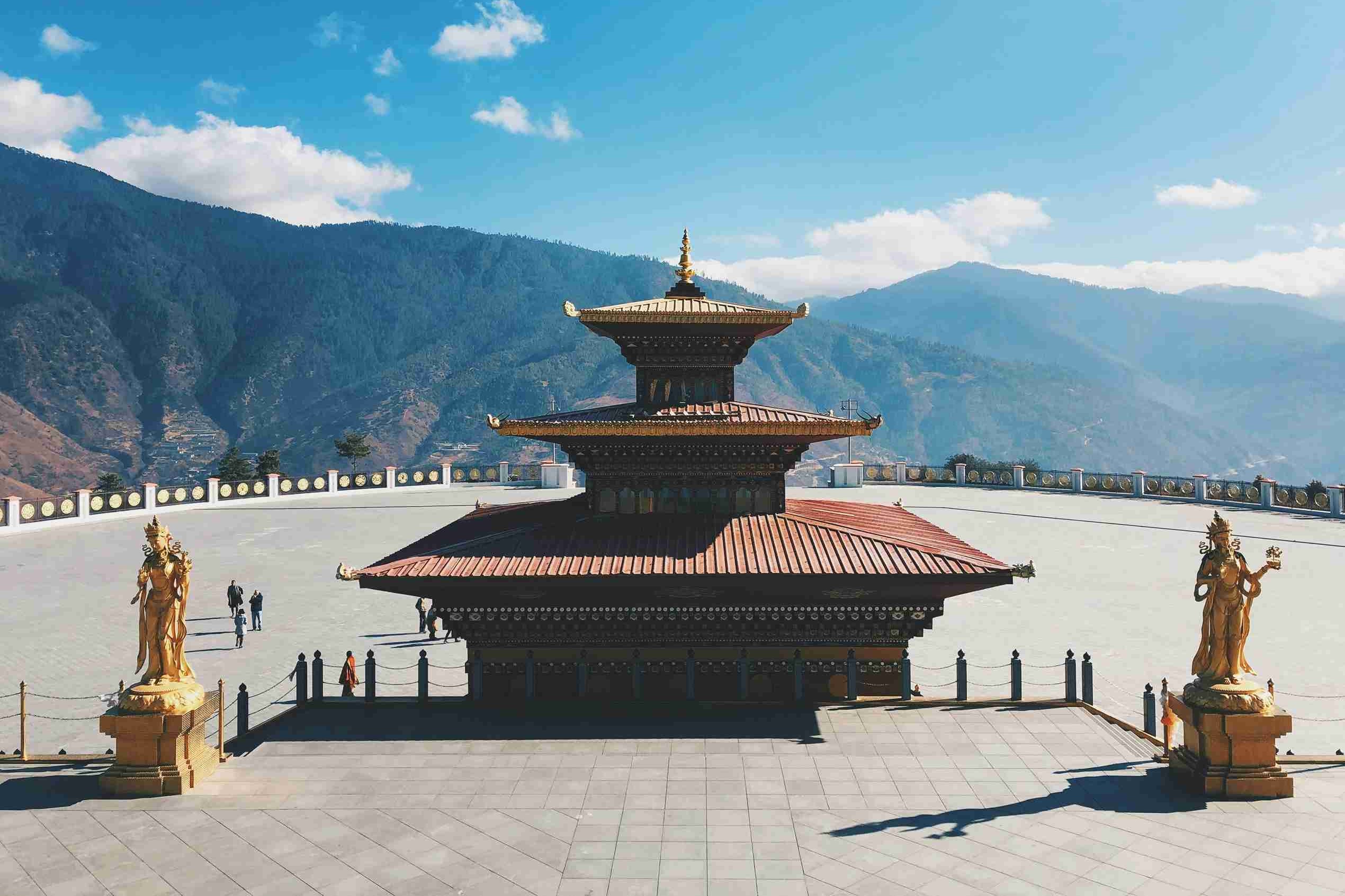
Select Pacakge To Calculate Price
- Theme
- Hill Station
- Duration
- 15Day(s) - 14Night(s)
- Location
- Bhutan
Most of our holiday packages are non refundable but in some cases we may allow the cancellation and do the refund:
If you cancel the holiday then the refund criteria will be:
You, or any member of your party, may cancel their travel arrangements at any time. Written notification or an e-mail to that effect from the person who made the booking must be received at our offices. The applicable cancellation charges are as per the published refund policy below:
Refund charges:
- Prior to 45 days or more: Booking Fee
- Between 44-31 days ahead of departure: 50% of tour cost
- Between 30-16 days of departure: 75% of tour cost
- 15 days to date of departure: 100%
- In case of no show: 100%

